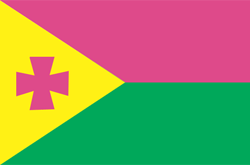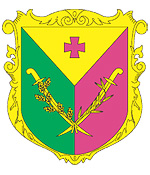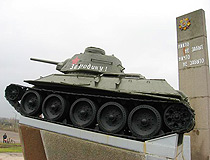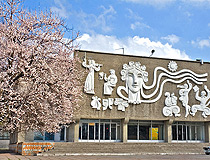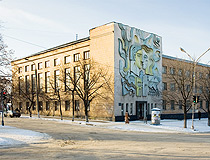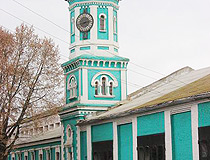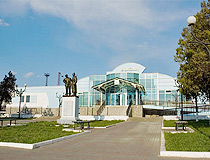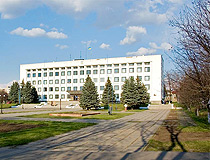Oleksandriya - Overview
Oleksandriya or Oleksandriia is a city of regional significance located in the north-eastern part of Kirovohrad Oblast, about 80 km east of the city of Kropyvnytskyi (former Kirovohrad), almost in the very center of Ukraine.
The population of Oleksandriya is about 76,000 (2021), the area - 55 sq. km.
The phone code - +380 5235, the postal codes - 28000-28019.
History of Oleksandriya
The exact date of the foundation of the settlement is unknown. Known as the Cossack settlement of Usovka since 1746, it was a fortified point on the way of raids of Crimean Tatars and campaigns of Poles in this region. The settlement stood on an important trade route from Poltava to the Crimea. In 1752, the population of Usovka was 256 people.
The historical center of the city is the place at the confluence of the Berezivka River in the Inhulets River - a convenient place for a defensive structure as it was protected on two sides by natural water barriers. Today, the central city park of culture and leisure named after T. G. Shevchenko and the cultural and sports complex “Nika” (the central stadium of Oleksandriya) occupy this area.
In 1752-1764, a company of the New Serbia regiment was garrisoned in Usovka. At that time, New Serbia was created - a military frontier of the Russian Empire in this region. The new settlers were mainly Serbs, Romanians, Croats, Bulgarians. The settlement received a new name - Becej (after the Becej River in Serbia). In the winter of 1769, the locals together with the garrison withstood the siege of the troops of the Crimean Khan Qirim Girai.
In 1764, New Serbia was abolished and Becej became part of the Elisabeth province of New Russia Governorate, which lasted until 1783, when its territory was included in the Ekaterinoslav Viceroyalty. In 1784, the fortified settlement of Becej became a county town of Alexandriysk. Later, the name of the town changed to Alexandria (Oleksandriya in Ukrainian). In 1793, its population was 738 people.
More Historical Facts…
Since 1806, Alexandria was part of the Kherson Governorate of the Russian Empire. The first educational institutions were opened in 1816. In 1823, its population was about 1,800 people. In the first half of the 19th century, the main occupation of local residents was agriculture (gardening and watermelon-growing). In 1847, the first coat of arms of Alexandria was approved.
In 1858, the population of the town reached 7,800 people. The liberation from serfdom and a number of other reforms stimulated the development of the economy. The number of processing enterprises increased, the construction of the railway began.
In 1855, a telegraph line passed through Alexandria, connecting Odessa with St. Petersburg. In 1869, the Odessa-Kharkov railway line came into operation, which passed through a station located in the immediate vicinity of Alexandria to the north (present Protopopivka), and in 1901 the railway passed through the town in the direction of the Dnipropetrovsk region.
Favorable geographical location at the crossroads of ways leading to the Black Sea and the Crimea had a positive effect on the development of trade and artisan industries. At the beginning of the 20th century, industrial production began in Alexandria (mechanical workshops and small casting shops). At the same time, the first attempt was made for industrial mining of local brown coal deposits.
Before the First World War, about 14,000 people lived in Alexandria, it was the third largest town in the territory that later became part of Kirovohrad Oblast. In 1917-1920, Alexandria experienced social upheaval, a repeated change of power, a civil war.
In the period before the Second World War, a mechanical plant and lignite (brown coal) mining enterprises were built in Oleksandriya. Noticeable changes occurred in the cultural life of the town. A school of nurses, a pedagogical school, and an educational college were opened, a mobile drama theater named after Marko Kropyvnytskyi was created.
On August 6, 1941, during the Second World War, German troops occupied Oleksandriya without a fight. During the occupation, almost the entire local Jewish community (more than 2,500 people), as well as more than 5,500 prisoners of war were killed. Soviet troops entered Oleksandriya on December 6, 1943. During the war, the residential buildings of the town were preserved as there were no fights, the retreating troops left it before the enemy approached, the town was not affected by large-scale bombing or shelling.
In the postwar years, Oleksandriya became a city of miners and machine builders. From 1951 to 1981, about 20 industrial enterprises were built, 9 of them for the extraction and processing of brown coal.
On August 1, 2003, the Kyiv-Dnipro high-speed railway line, which passed through Oleksandriya, was opened, a new railway station building was constructed. By 2006, the brown coal industry almost ceased to exist in the city.
Pictures of Oleksandriya
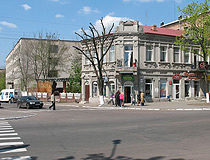
In the central part of Oleksandriya
Author: Maksim Zelenyak
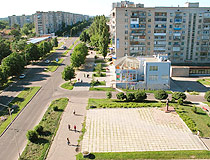
Apartment houses in Oleksandriya
Author: Maksim Zelenyak
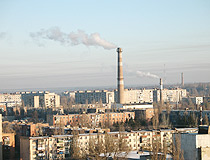
Oleksandriya cityscape
Author: Maksim Zelenyak
Oleksandriya - Features and Sights
The City Day of Oleksandriya is celebrated on the last Sunday of May.
The climate is temperate continental. The summer is long and hot, the winter is short with little snow. The average temperature of the warmest month (July) is plus 21 degrees Celsius, the coldest month (February) - minus 6 degrees Celsius.
The climatic conditions of Oleksandriya are favorable for the cultivation of winter wheat, corn, sugar beets, potatoes, and other crops, as well as gardening and vegetable growing. The city has enterprises of machine-building, chemical, food, light industries, it is the center of the Dnieper brown coal basin.
Football is actively developing in Oleksandriya. FC “Oleksandriya”, starting from the 2015/2016 season, has been participating in the Ukrainian Premier League. In the season 2018/2019, this football club won bronze medals of the Ukrainian Championship.
Oleksandriya has several park areas. The largest park named after T. G. Shevchenko is located at the confluence of the Berezivka and Inhulets rivers, in the historical center of the city. During the years of Soviet power, all churches were destroyed. There are few architectural monuments in the city.
Oleksandriya Museum of Local Lore named after A. Khudyakova was opened in 1967. It bears the name of the hero of the Soviet Union A. Khudyakova - the director of the museum in 1980-1991. In total, there are more than 17,000 exhibits. The museum exposition has two departments - historical and natural.
In addition, the regional ethnography is presented by a model of the Ukrainian house and various household items: dishes, household utensils, tools, etc. There are collections of banknotes and coins of different eras and countries, old photographs, exhibits related to the cosmonaut L. Popov, the native of Oleksandriya. Opening hours: 08:00-17:00. Day off: Monday. Perspektivna Street, 14.
Pishchevych House (1902) - an architectural monument of national importance. Semyon Grigorievich Pishchevych, chairman of the Oleksandriya Zemsky Council, a nobleman, a deputy of the State Duma from the Kherson province lived in this house.
There is a legend that Pishchevych won the money for the construction of this house in cards. The myth was born, most likely, due to the shape of the windows made in the form of card suits. Therefore, locals called this building “The House of the Queen of Spades.” Today, this completely renovated building is a hotel and entertainment complex. Pershotravneva Street, 4.
Oleksandriya Fire Station - one of the few old buildings preserved in the city. The fire tower in the Ukrainian Baroque style was built in 1896, and the entire complex of the station - in 1900-1902. In the 1980s, a city clock was installed on the fire tower. Bratska Street 10.
Near Oleksandriya there are several abandoned and partially flooded quarries in which brown coal was mined for years. The most interesting ones are the Morozovsky coal mine and the Konstantinovsky coal mine. They became known because picturesque huge rotary excavators had been left there creating a great backdrop for post-apocalyptic photos, hence the name - excavator cemeteries. Unfortunately, as sources of free scrap metal, they attract increased attention and will probably disappear completely over time.


